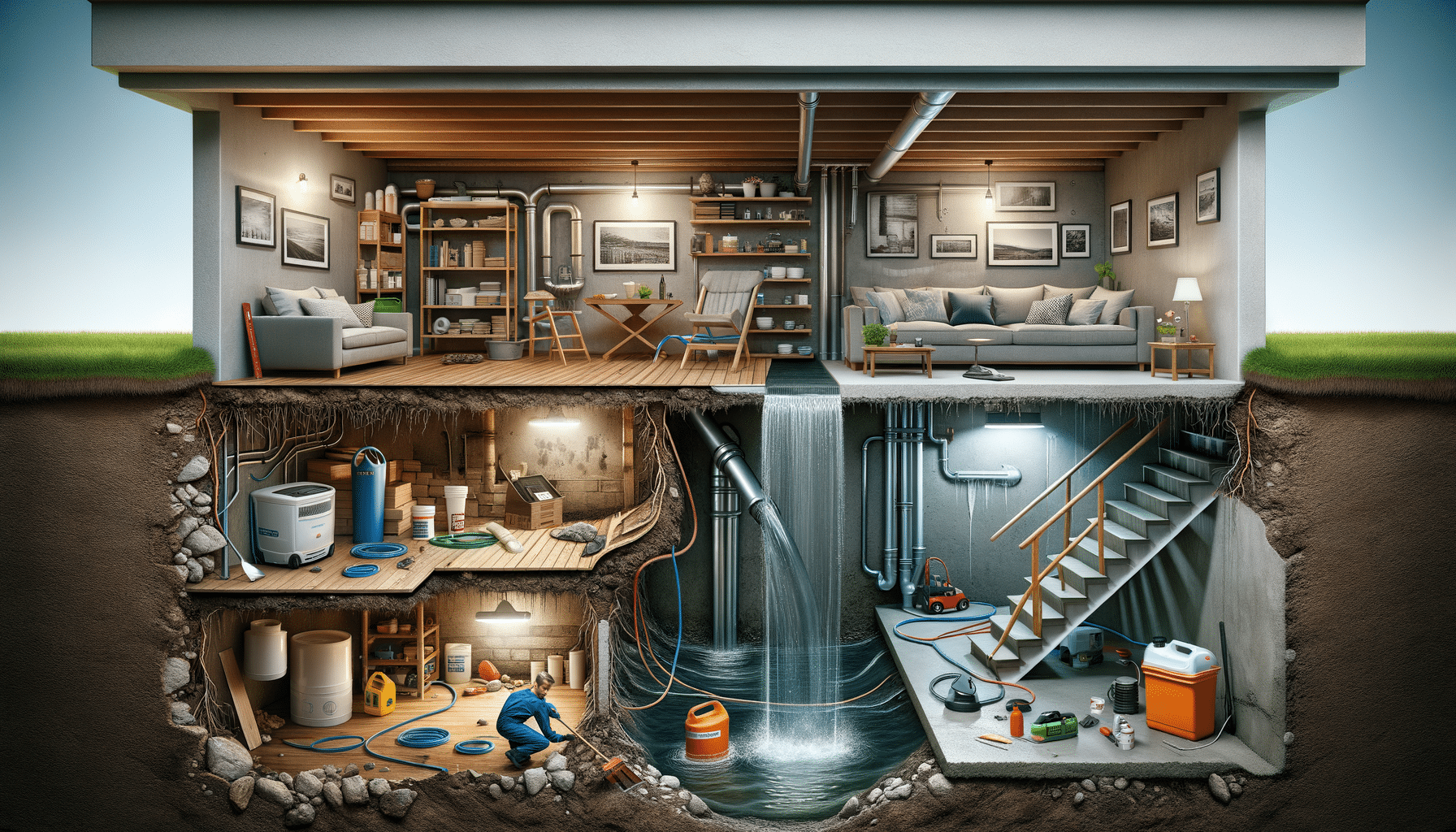
What to Expect When Repairing a Leaky Basement
Understanding the Causes of a Leaky Basement
Basements are prone to water issues due to their location below ground level, where they are surrounded by soil that retains moisture. Several factors contribute to basement leaks, including poor drainage, hydrostatic pressure, and foundation cracks. Understanding these causes is crucial for effective repair and prevention.
One of the primary causes is inadequate drainage systems. When gutters and downspouts are clogged or improperly directed, rainwater can accumulate around the foundation, increasing the risk of leaks. Hydrostatic pressure, which is the force exerted by standing water in the soil, can push water through even the smallest cracks in the basement walls or floors. Additionally, natural settling of the house over time can lead to cracks in the foundation, providing an entry point for water.
Addressing these issues involves a combination of exterior and interior solutions. Homeowners may need to improve drainage by cleaning gutters and extending downspouts away from the house. Sealing cracks and applying waterproof coatings can also help, but these measures should be part of a comprehensive strategy that includes professional assessment and repair.
Common Methods for Basement Repair
Once the causes of a leaky basement are identified, several repair methods can be employed. These methods vary in complexity and cost, but they all aim to keep the basement dry and structurally sound. Some homeowners find nearby professionals to help fix the issue using these methods:
1. **Interior Sealants**: These are often the first line of defense. Interior sealants can fill minor cracks and prevent moisture from seeping through. They are a temporary solution and are best used in conjunction with other methods.
2. **Exterior Waterproofing**: This involves excavating the soil around the foundation and applying a waterproof membrane to the exterior walls. While more expensive, this method provides a long-term solution by preventing water from entering the basement.
3. **Drainage Systems**: Installing a drainage system, such as a French drain, can effectively redirect water away from the foundation. Sump pumps are also commonly used to remove accumulated water from the basement.
Each method has its advantages and limitations, and the choice depends on the specific conditions of the basement and the severity of the water issue.
The Role of Professional Assessment in Basement Repair
While some DIY solutions can temporarily alleviate basement leaks, professional assessment is often necessary for a comprehensive and lasting repair. Professionals have the expertise and tools to accurately diagnose the problem and recommend the most effective solutions.
Professional assessment typically involves a thorough inspection of the basement and surrounding areas. Experts will look for signs of water damage, such as mold, mildew, and efflorescence, which is a white powdery substance that forms on masonry surfaces. They will also assess the condition of the foundation and the effectiveness of existing drainage systems.
Based on their findings, professionals can suggest a tailored repair plan that addresses both the symptoms and the underlying causes of the leaks. This plan may include a combination of interior and exterior waterproofing, foundation repair, and drainage improvements.
Hiring a professional not only ensures that the repair is done correctly but also provides peace of mind that the basement will remain dry and safe for years to come.
Preventative Measures to Keep Your Basement Dry
Prevention is key to avoiding future basement leaks and the costly repairs that come with them. By taking proactive measures, homeowners can protect their basements from water damage and maintain a healthy living environment.
Regular maintenance of gutters and downspouts is essential. Ensuring they are clean and free of debris will prevent water from pooling around the foundation. Extending downspouts at least 10 feet away from the house can further reduce the risk of water infiltration.
Landscaping also plays a crucial role in basement waterproofing. Grading the soil to slope away from the house can help direct water away from the foundation. Planting water-tolerant plants near the foundation can absorb excess moisture and reduce soil erosion.
Installing a dehumidifier in the basement can help control humidity levels and prevent mold growth. Additionally, regularly inspecting the basement for signs of leaks and addressing them promptly can prevent minor issues from becoming major problems.
By combining these preventative measures with professional advice and repair, homeowners can ensure their basements remain dry and functional.
Choosing the Right Professional for Basement Repair
When it comes to basement repair, selecting the right professional is crucial for a successful outcome. The process involves researching, comparing, and evaluating potential contractors to ensure they have the necessary skills and experience.
Start by seeking recommendations from friends, family, and online reviews. Look for contractors who specialize in basement repair and have a proven track record of success. Checking their credentials, such as licenses and certifications, can provide additional assurance of their expertise.
Once you have a list of potential contractors, schedule consultations to discuss your specific needs. During these meetings, ask about their approach to basement repair, the methods they recommend, and the estimated costs. A reputable contractor will provide a detailed proposal and be transparent about the scope of work and timeline.
It’s also important to inquire about warranties and guarantees. A contractor who stands by their work will offer warranties on both materials and labor, providing peace of mind that the repair will last.
By taking the time to choose the right professional, homeowners can ensure their basement repair is completed efficiently and effectively, protecting their home from future water damage.


